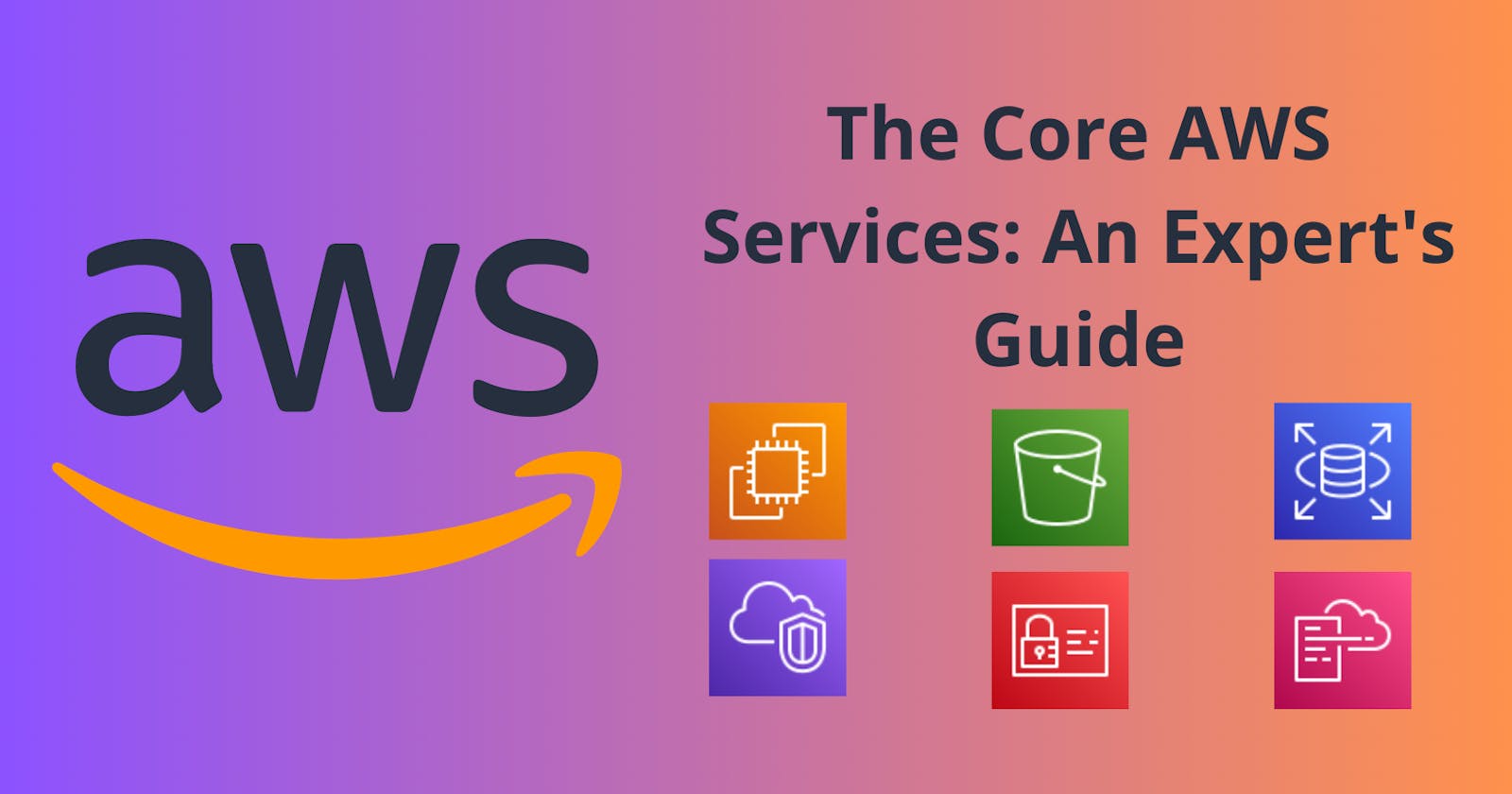As an IT expert, you know that Amazon Web Services (AWS) is one of the most popular cloud computing platforms in the world. With over 200 services, it can be overwhelming to know where to start. In this article, we will explore the core AWS services and how they can benefit your organization.
What are the Core AWS Services?
AWS has several categories of services, including Compute, Storage, Database, Networking, Security, Management, and Developer Tools. The core AWS services include those that are most commonly used and are essential for building and deploying applications on AWS. They are:
Amazon Elastic Compute Cloud (EC2)
Amazon Simple Storage Service (S3)
Amazon Relational Database Service (RDS)
Amazon Virtual Private Cloud (VPC)
AWS Identity and Access Management (IAM)
AWS CloudFormation
Let's dive deeper into each of these services.
Amazon Elastic Compute Cloud (EC2)

Amazon EC2 is a web service that provides resizable compute capacity in the cloud. It allows you to create virtual machines (instances) on demand, with different sizes, operating systems, and applications. You can launch instances in minutes and pay only for what you use. EC2 is highly scalable and can handle thousands of instances, making it ideal for large-scale applications.
Example: Suppose your organization needs to run a website that receives a lot of traffic. You can use EC2 to launch multiple instances to handle the load. You can also use EC2 to run applications and batch jobs.
Amazon Simple Storage Service (S3)

Amazon S3 is an object storage service that provides highly scalable and durable storage for any type of data. It allows you to store and retrieve files, documents, images, videos, and other data in the cloud. S3 provides high availability and durability, with multiple copies of your data stored across different locations. You can also set up access controls and versioning for your data.
Example: Suppose your organization needs to store large amounts of data, such as customer data, backups, or media files. You can use S3 to store and manage your data, and access it from anywhere in the world.
Amazon Relational Database Service (RDS)

Amazon RDS is a managed database service that makes it easy to set up, operate, and scale a relational database in the cloud. It supports several database engines, including MySQL, PostgreSQL, Oracle, and SQL Server. RDS provides automatic backups, automatic software patching, and automatic failover, making it highly available and reliable.
Example: Suppose your organization needs to store and manage data in a relational database. You can use RDS to set up and manage your database, without worrying about hardware or software maintenance.
Amazon Virtual Private Cloud (VPC)

Amazon VPC is a virtual network that allows you to launch AWS resources into a virtual network that you define. It provides complete control over your virtual networking environment, including IP address ranges, subnets, and route tables. You can also connect your VPC to your on-premises network using a VPN or Direct Connect.
Example: Suppose your organization needs to launch instances in a private network, with specific IP addresses and security settings. You can use VPC to create a virtual network, launch instances, and configure security groups and network ACLs.
AWS Identity and Access Management (IAM)

AWS IAM is a web service that helps you securely control access to AWS resources. It allows you to create and manage users, groups, and roles, and assign permissions to access specific AWS resources. IAM provides fine-grained access control, with support for multi-factor authentication and identity federation.
Example: Suppose your organization needs to grant access to AWS resources to different users and roles. You can use IAM to create users and groups, assign permissions to access specific resources, and ensure that only authorized users can access those resources.
AWS CloudFormation

AWS CloudFormation is a service that allows you to create and manage AWS resources as code. It provides templates that you can use to automate the creation and deployment of AWS resources, including EC2 instances, databases, load balancers, and security groups. CloudFormation provides versioning and rollback capabilities, making it easy to manage and maintain your infrastructure.
Example: Suppose your organization needs to launch a new application in AWS, with multiple resources such as EC2 instances, databases, and load balancers. You can use CloudFormation to create a template that defines the infrastructure, and then launch the template to create and deploy the resources.
Conclusion
In this article, we have explored the core AWS services and how they can benefit your organization. Amazon EC2 provides resizable compute capacity in the cloud, Amazon S3 provides highly scalable and durable storage for any type of data, Amazon RDS provides a managed database service, Amazon VPC provides a virtual network, AWS IAM helps you securely control access to AWS resources, and AWS CloudFormation allows you to create and manage AWS resources as code. By using these core services, you can build and deploy applications on AWS with ease and efficiency.

